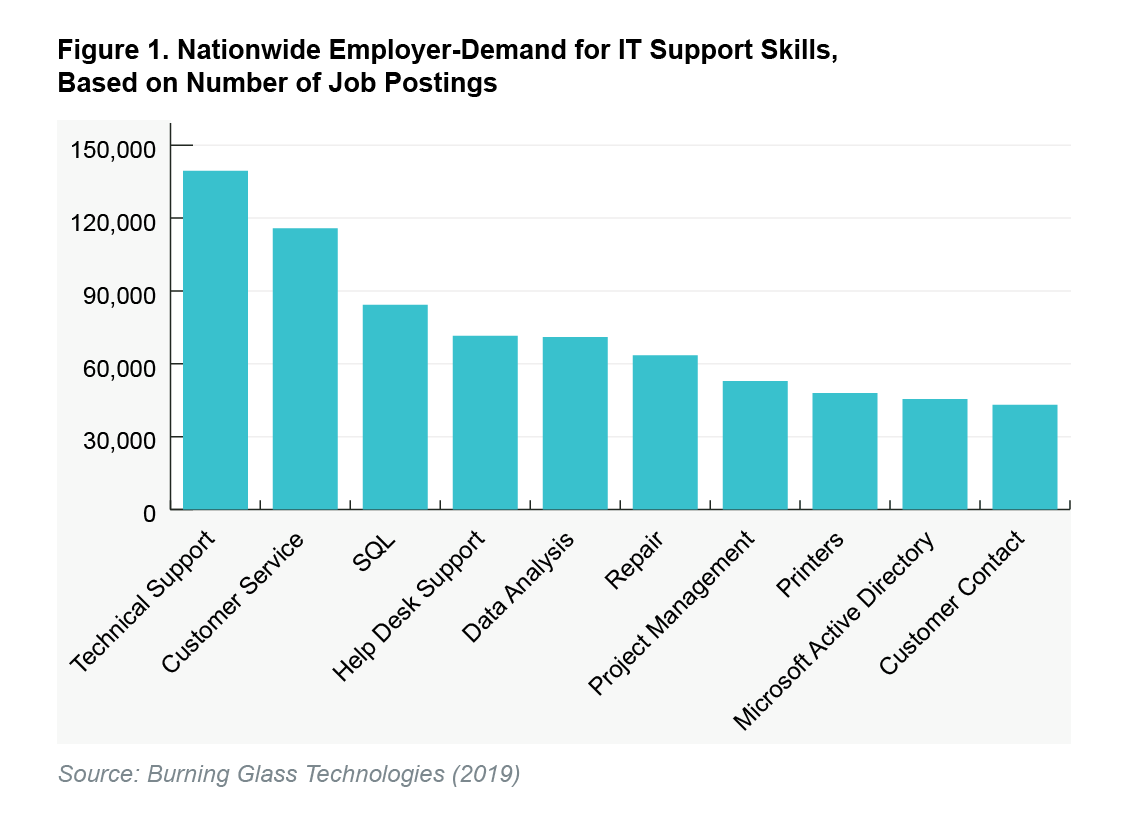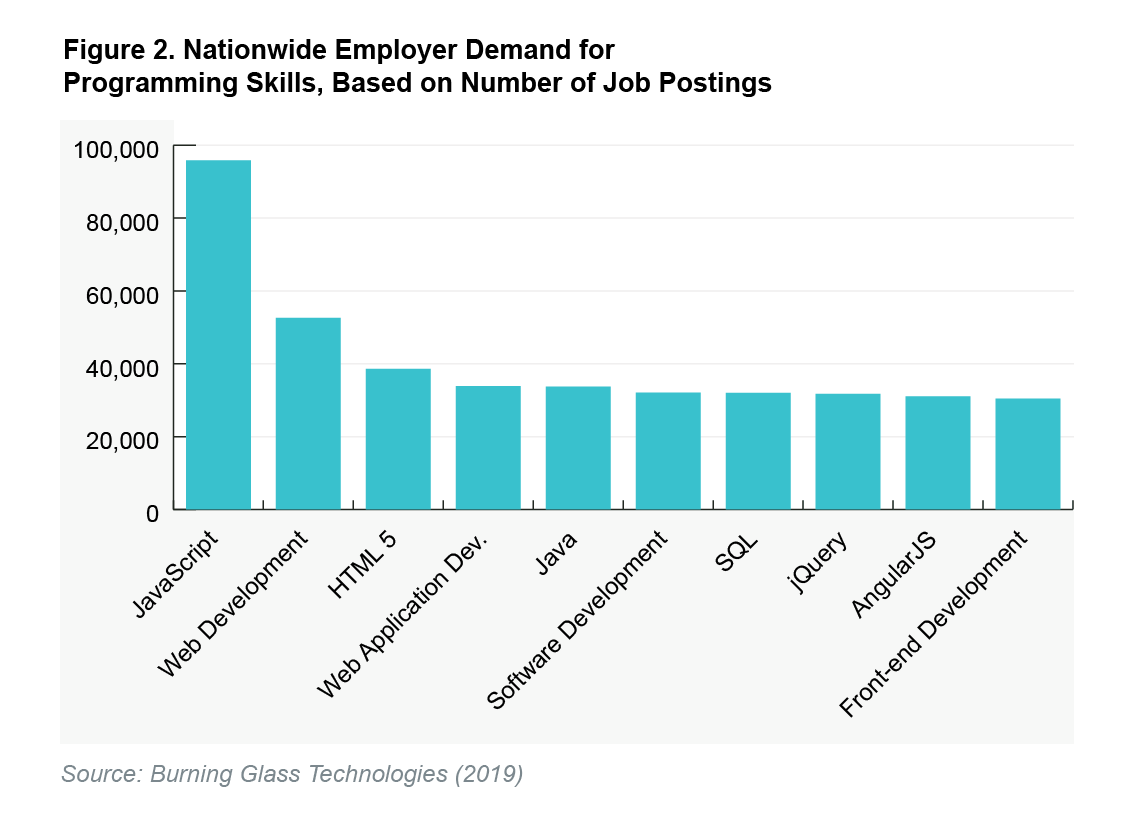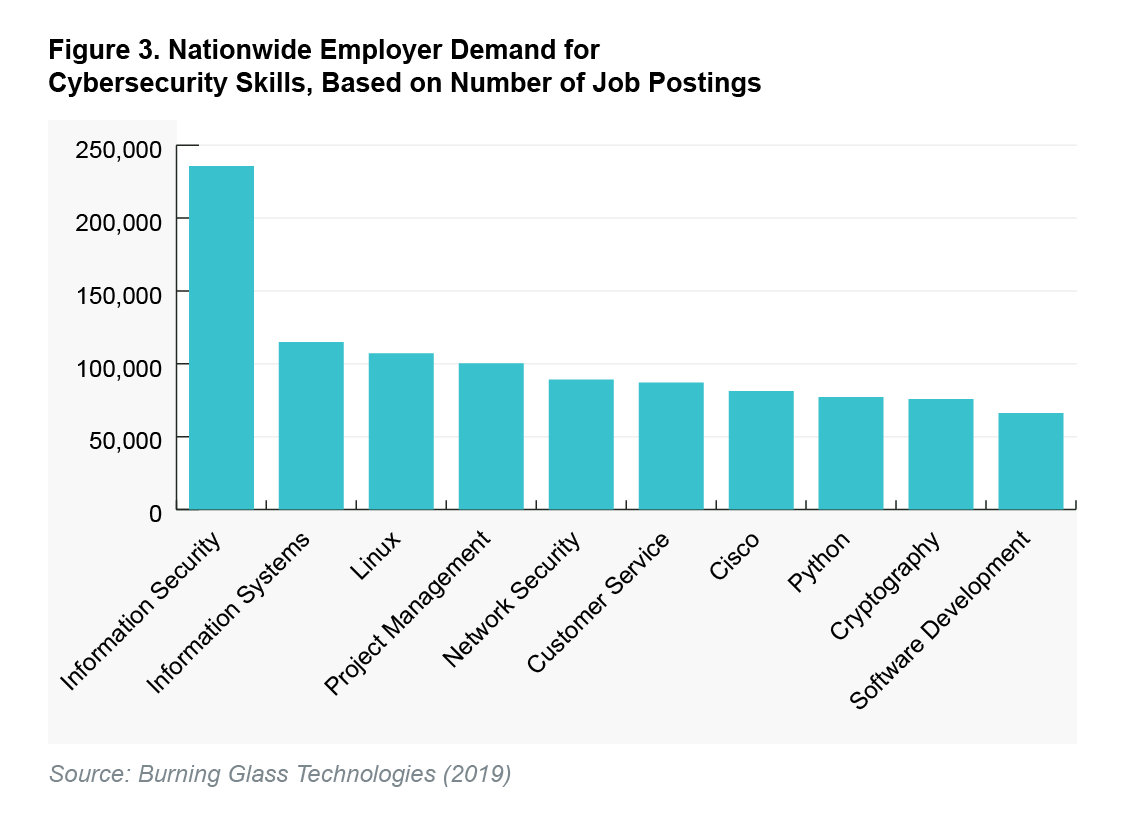July 23, 2020
This is the second component of the Framework for a High-Quality IT Pre-Apprenticeship Program from JFF’s Center for Apprenticeship & Work-Based Learning.
Pre-apprenticeship programs should integrate in-demand technical and employability skills that prepare participants for IT apprenticeships, while also providing the foundation for longer-term career growth and development. This framework draws upon real-time job posting data to identify specific skills that are most important for new entrants to the IT field. Because of their relevance for entry-level IT roles—and accessibility to individuals without a bachelor’s degree—the framework focuses on skills relevant for IT support, cybersecurity, and web development pathways. IT pre-apprenticeships that prepare individuals for other IT pathways should conduct similar labor market analyses.
All skills data cited in this section is drawn from 12-month nationwide data from Burning Glass Technologies, extracted by JFF’s Sara Lamback from Labor/Insight in August 2019.
High-quality IT pre-apprenticeship programs should support participants in acquiring employability skills such as teamwork, written communication, problem solving, initiative, flexibility, and reliability.
Many employability skills have broad relevance to employers hiring across the IT career pathways, mirroring those of other sectors but also including IT-specific skills such as creativity and attention to detail.
Job postings in the IT sector reflect a demand for communication, teamwork, problem solving, planning, written communication, research, creativity, attention to detail, and organizational skills. Programs can leverage existing job-readiness training and contextualize it for the IT sector.
High-quality IT pre-apprenticeship programs should support participants in acquiring sufficient skills and academic credentials for entry into a high-quality apprenticeship or an entry-level job with advancement potential in the industry.
Several technical skills are valued across the IT sector, but pre-apprenticeship programs should also teach skills aligned with IT support and service, cybersecurity, or programming and software careers.
The U.S. Department of Labor’s Career OneStop Information Technology Competency Model introduces skills needed for growth and advancement within the IT industry. It provides a comprehensive overview of the foundational personal, academic, and workplace competencies for the industry, and illustrates how skill building should lead to the technology- and occupation-specific competencies.
Pre-apprenticeship programs should focus on ensuring that individuals gain industry-wide technical competencies. Job postings offer broad relevance across the sector by highlighting the skills that are most in demand: technical support, systems administration, help desk support, Microsoft Active Directory, repair, hardware/software installation, and Linux. In addition, most entry-level jobs also require specialized technical skills. Therefore, high-quality IT pre-apprenticeships should provide a broad introduction to these general skills while also introducing more advanced skills aligned with a specific pathway.
IT Support and Service
Approximately 1.9 million workers were employed nationwide in IT support and service jobs in 2018. Entry-level IT support roles—such as computer user support specialist and network support specialist—are accessible to individuals without a bachelor’s degree, have strong wages, and offer a path to advancement, making them a strong match for pre-apprenticeship programs. Key technical skills for IT support and service roles are highlighted in Figure 1.

Programming and Software
For the programming and software pathway, the entry-point occupation is web developer, a role with a median salary of approximately $69,000. Around 30 percent of individuals in this occupation have a high school degree or some college. Pre-apprenticeship programs should build participants’ exposure to and skills in programming languages, as indicated in Figure 2.

Cybersecurity Roles
Cybersecurity is a high-growth field that can be accessed through a range of IT pathways—including programming, IT support, and networking. While cybersecurity jobs have historically favored bachelor’s degrees, Registered Apprenticeship programs targeting roles such as cybersecurity analyst, computer forensics analyst, and secure software developer have emerged in recent years to help meet demand. Cybersecurity roles are often hybrid; they require distinct skills and competencies, so cybersecurity pre-apprenticeship programs should build skill in areas such as information security, network security, information systems, and cryptography, while also introducing apprentices to programming languages such as Linux and Python (see Figure 3).

High-quality IT pre-apprenticeship programs align curriculum with a range of training and employment pathways.
They focus on a subsector of the industry—IT support and service, cybersecurity, or programming and software—rather than a single occupation.
As discussed above, broad technical skills and employability skills are generally not sufficient for entry-level IT employment. Pre-apprenticeship programs should also lay the groundwork for higher-level technical competencies aligned with IT support and service, cybersecurity, or programming and development. Each of these subsectors offers a range of employment pathways while not overly limiting the career options of pre-apprenticeship graduates.
High-quality IT pre-apprenticeship programs design instruction and training to reach underserved populations.
IT pre-apprenticeship programs should draw on best practices for specific target populations regardless of industry sector.
IT training programs that are designed to meet the unique needs of underserved populations will be the most effective at expanding equitable access to career pathways in the industry. Programs should incorporate promising practices to serve these participants. These could include providing additional services and supports, offering an ecosystem of community partnerships, applying a gender lens to training design, or using a Universal Design for Learning approach when developing curricula and classroom lessons.